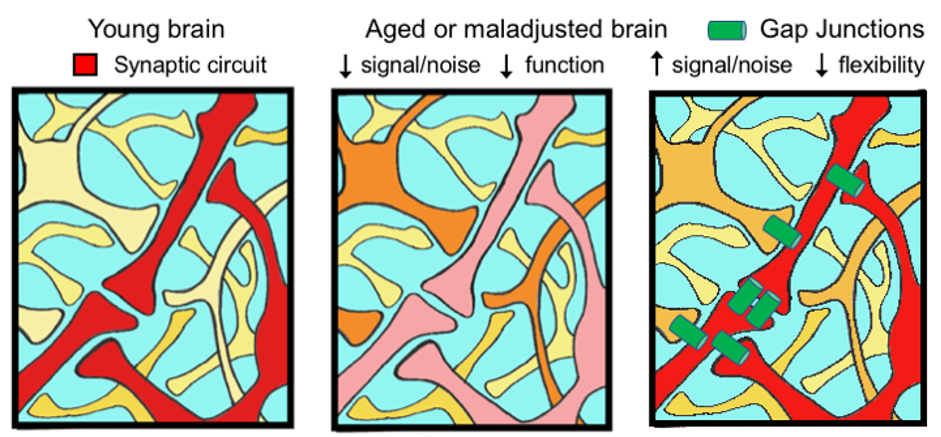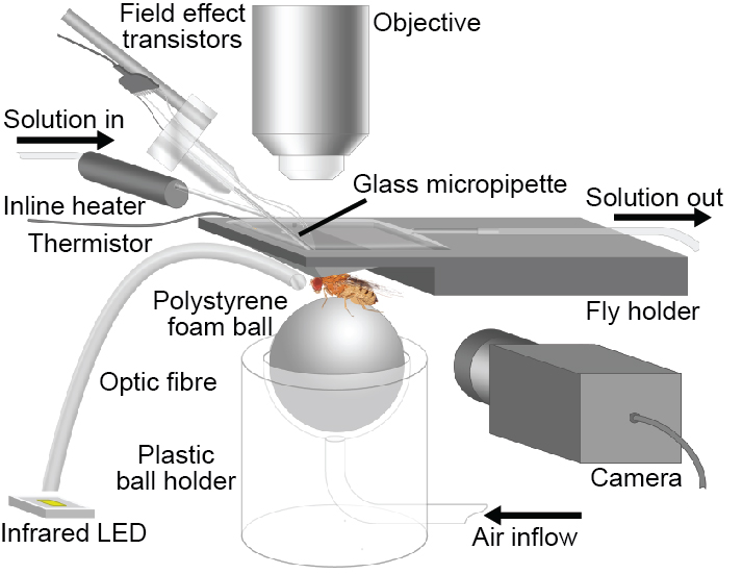Bridging the gap between electrical and molecular sleep functions
Sleep is associated with distinct electrical signatures in the brain, such as ripples and slow waves, yet sleep functions are most likely achieved at a molecular level.
Objective/mission (the vision)
We have discovered that electrical synapses, or gap junctions, are important for regulating sleep in Drosophila. Sleep-related 7-10Hz oscillations require gap junction expression in sleep-promoting neurons in order to propagate through throughout the fly brain, and downregulating innexin6 gap junction proteins in these neurons decreases sleep and makes flies more responsive to environmental stimuli. We hypothesise that gap junctions play two simultaneous roles for sleep, by first enabling a suppression mechanism allowing sleep to happen, and second by providing a conduit to other cells that are actively involved in achieving key sleep functions. We are testing whether these cells might be glia, with a view to understanding how specific electrical signals might activate important glial functions.
Research approach (the initiative)
In addition to the behavioural and brain recording approaches that we employ for our other sleep projects, here we add a number of molecular approaches. This includes deep RNA sequencing to identify genes that might be differentially expressed during deep sleep versus active sleep, as well as RT qPCR to verify any gene hits or to track changes in gene expression during sleep. Immunohistochemistry work provides insight about changes in protein expression levels in the fly brain during different sleep manipulations. Genes of interest are interrogated by classical genetic analysis, such as knockdown or overexpression in circuits of interest. Finally, sleep functions are verified using cognitive readouts such as visual attention.
Impacts and applications
To better understand sleep requires uncovering its various functions and appreciating how these might be distributed among distinct sleep stages. It is becoming increasingly clear that glia are important effectors of sleep functions, especially those pertaining to maintaining cellular health. Understanding how these functions might be co-opted to help repair the brain while bypassing the need to sleep would be of tremendous therapeutic value. This can be tested in the fly model.



